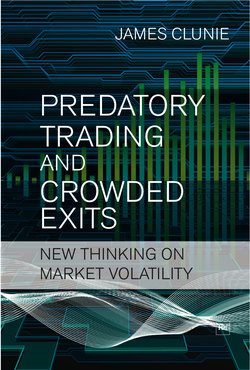Читать книгу Predatory Trading and Crowded Exits - James Clunie - Страница 26
На сайте Литреса книга снята с продажи.
To what extent do short-sale constraints play a role in limiting arbitrage?
ОглавлениеNagel (2005) argues that institutions are important lenders of stock and that the supply of stock to borrow is likely to be sparser in companies with low institutional ownership. Accordingly, short-sale costs should be higher and constraints more binding in such stocks. Using institutional ownership as a proxy for short-sale constraints, he finds that short-sale constraints help explain apparent return anomalies across stocks, such as “the underperformance of stocks with high market-to-book ratio, analysts’ forecast dispersion, turnover or volatility.” However, direct short-selling constraints do not fully account for the cross-sectional return differences. Indirect short-sale constraints also matter.
Short-sale constraints can also lead to over-pricing due to the opportunity to speculate that arises when shorting is prohibited. Duffie et al. (2002) create a dynamic model of equity prices, stock lending fees and short-interest. They show that a stock price can initially be higher than the greatest valuation of any investor, because the price should include the benefits obtained from being able to lend the stock in future.
A stock price, when limited shorting is permitted, is initially higher than the price with no shorting permitted, as the shareholder expects to earn returns from lending the stock in future. This provides a rebuttal against the common perception that easier access to shorting results in poorer performance for a stock. The authors argue that this can explain the negative stub-value effect associated with some corporate spin-offs (i.e. a negative implied market value for the portion of a parent company not spun off, even though equity is associated with limited liability).
This phenomenon was seen in March 2000 when 3Com sold around 5% of its stake in Palm and the latter went public on the NASDAQ market. 3Com planned to distribute the remainder of its Palm shares directly to existing 3Com shareholders in the ratio of 1.483 Palm shares for each share of 3Com held. An investor wanting to buy a stake in Palm could have bought, say, 1483 shares of Palm or 1000 shares in 3Com. The latter would ultimately have given him 1483 Palm plus a share of the assets belonging to 3Com. According to this logic one share of 3Com should have cost at least 1.483 times more than one share of Palm. However on the day of its IPO, Palm shares closed at $95.06 while the shares of 3Com closed at $81.81. This implied a negative stub value for 3Com shares.
In the Duffie et al. (2002) model, as lending fees decrease, so too does the valuation associated with the marginal investor and this leads to a decline in stock price. The model also shows that price declines associated with falling lending-fee effects are likely to be greater for companies with a smaller free-float (i.e. a smaller proportion of a company’s shares being tradable in public markets) or with larger differences of opinion between investors (as proxied by higher turnover). This is consistent with poor average returns following an initial public offering, when investor opinions are likely to differ greatly (due to low levels of knowledge about the new company) and when free float is likely to be lower (due to lock-ins of stock held by directors and officers).
